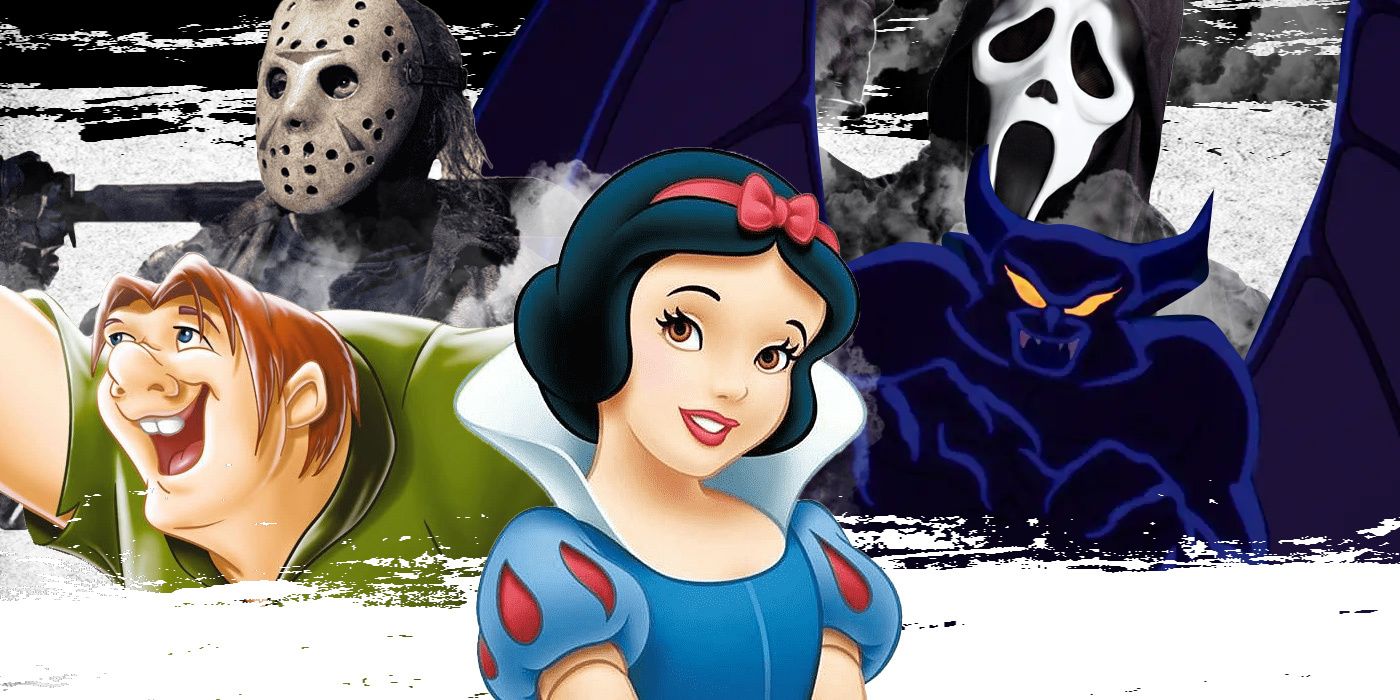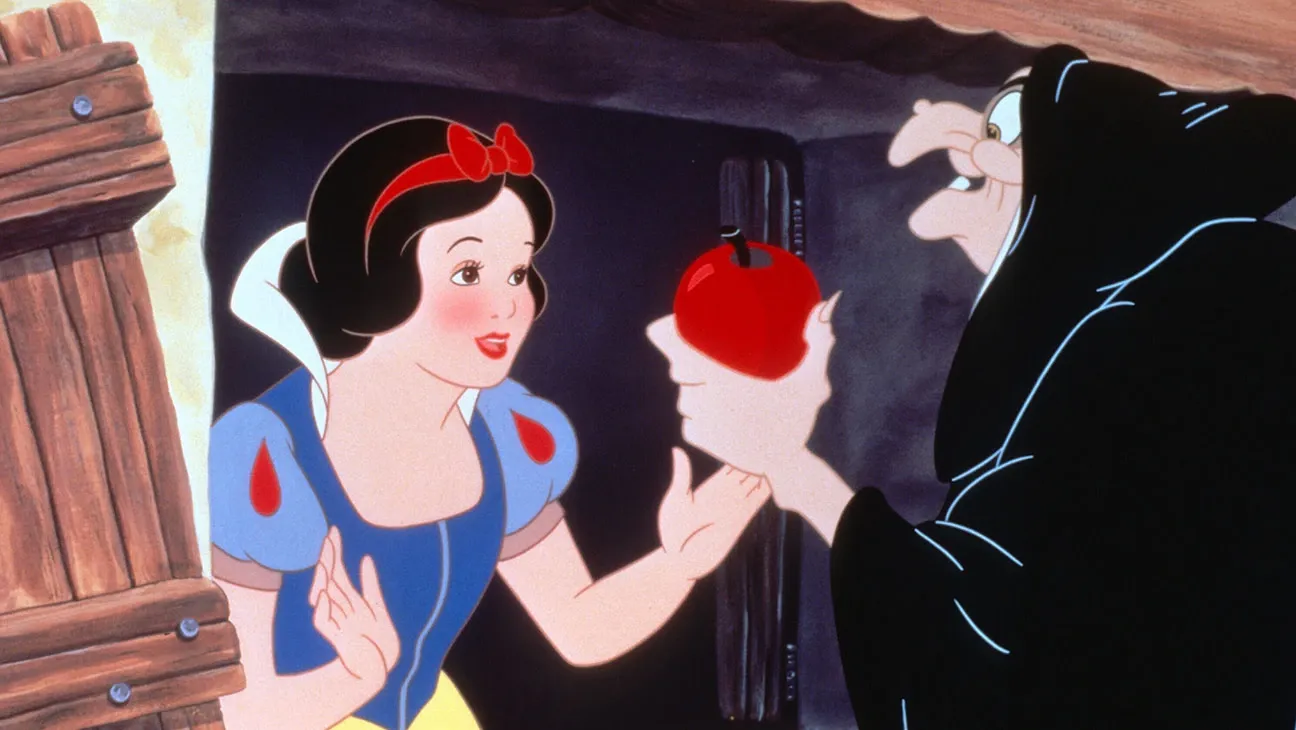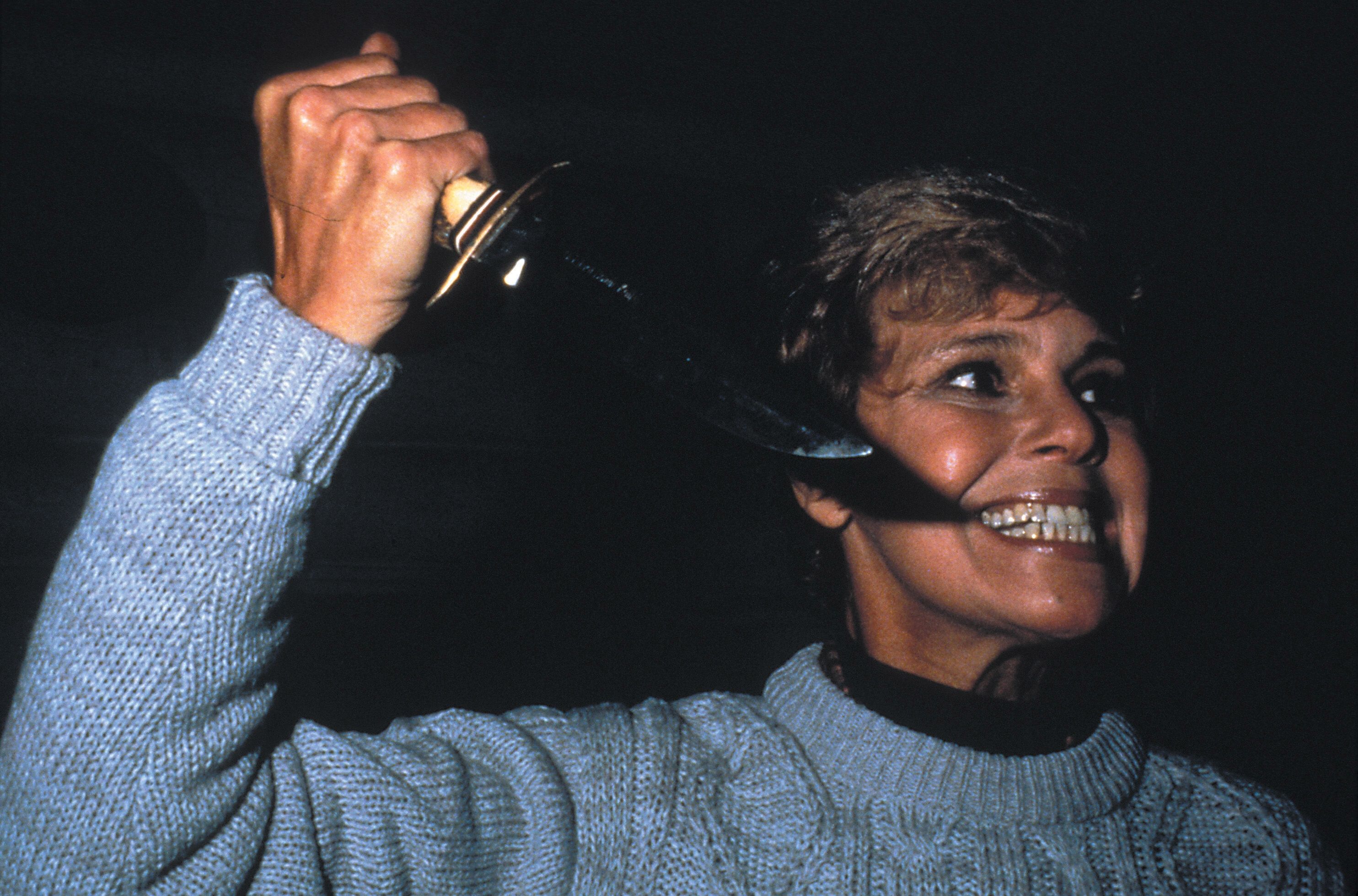“And now your feature presentation.” Cue the twinkling music playing over a blue background fit with a glowing white castle. Long before Disney+, it would be a VHS tape or DVD that would need to be played. There is an assortment of titles that one could be watching but chances are, there’s an additional excitement attached if they are under Disney older eras: Golden Age, Silver Age, The Bronze Age or its Renaissance. Those movies had an edge to them. Parents were killed early on, if they were not already dead. Villains were outright sinister, with no hint of redemption. Perhaps the best double feature of Disney and horror is Snow White and the Seven Dwarfs and Suspiria. It wasn’t by accident Italian filmmaker Dario Argento drew inspiration from the former. Suspiria was specifically made to be a horror infused homage, using its character tropes and visuals. Fever dream sequences of vibrant colors blur the line between fantasy and reality. Suzy (Jessica Harper), the young and innocent protagonist is a stand-in for Snow White, but she has her work cut out for her. Instead of an Evil Queen, she has to go up against a coven of murderous witches. Similar to the powerful use of music in Snow White, is the punk score by Goblin in Suspiria, full of bewitching chants. The link between these two show how easy it is for kids to grow up and move on to the maturity found in horror movies. However, not everything is such a direct homage. In using wicked maternal figures and monstrous transformations, Disney classics also gave a simple approach to the theme of good vs. evil whereas the horror genre turned each of those elements on its head, making it murky and all the more violent.
To truly begin a Disney classic, there is usually the loss of innocence. Disney producer, Don Hahn, spoke on this in an interview with Glamour. One reason this became such a frequent plot point could be that when Walt Disney bought his parents a new home, a household accident not only made his father ill, it killed his mother. Then there is the narrative reason: Disney films are “that day in your life when you have to accept responsibility.” Hahn went on to say, “In shorthand, it's much quicker to have characters grow up when you bump off their parents. Bambi's mother gets killed, so he has to grow up. Belle only has a father, but he gets lost, so she has to step into that position.” Like a horror movie’s opening kill or another kind of early terrible tragedy, the struggles of horror movie characters have to start somewhere.
From the two feature films director Ari Aster has made, Midsommar was an adult fairy tale brought to life, perverse in its pubic hair love rituals and a May Queen trapped in a gown of flowers, hysterically sobbing. Right away in the opening moments, Aster shows his inspiration. A detailed wall of art is presented, lush in illustrations foreshadowing the events to come, all the while an enchanting score plays. And what ignites the mental breakdown and journey to the Swedish cult for Dani (Florence Pugh), our eventual May Queen? The horrific murder-suicide her sister commits against her parents and herself. Aster explained why he used this specific catalyst for his film. “It does have a structure of a fairy tale,” he said. “If you’re just looking at Dani’s trajectory, and she is the person we’re most aligned with, at the beginning she loses a family and at the end she gains one.”
A moment of silence for all the Disney parents that bit the dust, both human and animal. Even after that life altering moment, the heroes and heroines weren’t safe yet. In the 90-minute runtime, they had to face off against even more threats of death and destruction. Disney had its collection of haunting images to visualize this. Fantasia’s gargoyle-devil incarnate in the form of Chernabog, perched on a dark slab of mountain. The Hunchback of Notre Dame's Frollo kicking away a young mother, killing her when she hits her head on the steps of a cathedral. The silhouette of Clayton’s corpse, his neck broken from jungle vines in Tarzan. But who had to face these conflicts presented to them? More often than not, it was princesses, and what could be a better representation of a Disney princess than the final girls of the slasher subgenre? Equating the two isn’t so far fetched of an idea: both have a similar trajectory in how the characters were handled. Starting out as passive victims with a sweet or timid demeanor, they developed into strong warriors. Halloween's Laurie Strode (Jamie Lee Curtis) was originally far more vulnerable than the more recent, complex incarnations of the character. And that made Scream's Sidney Prescott (Neve Campbell) a breath of fresh air. An enormous amount of agency was supplied to Scream’s final girl, as well as a backstory and series of movies to show her growth.
The threat to the beloved Disney heroines came in the form of the archetype that became a favorite, that of a wicked step-parent who will make life hell. Horror has its own share of these. There’s Lady Van Tassel (Miranda Richardson) in Sleepy Hollow, regal, calm-headed, and the mastermind behind the film’s beheadings. She’s stepmother to a young woman who she wants to eliminate, not due to jealousy but due to greed. Men aren’t out of the woods either, with Terry O’Quinn being in two installments of The Stepfather trilogy. But it would be Mrs. Loomis and Mrs. Voorhees that challenged this archetype made so prominent in Disney. These two women were biological mothers who lost a child, rather than harmed one. In Friday the 13th, Mrs. Voorhees (Betsy Palmer) was never the same after camp counselors were too lost in their lustful romance to realize her little Jason was drowning. In Scream, Mrs. Loomis (Laurie Metcalf) learned final girl Sidney took out her son, Billy, and choose to seek revenge for it, never mind that he was the brains behind a series of slasher movie-inspired killings. The loss of their child turned these mothers into monsters. On the matter of monsters, Disney loved to visualize them another way, too.
Monstrous transformations, well known in horror cinema, can represent the fears characters have of their own body, what happens if their body starts to deteriorate or otherwise turn against themselves. Disney has touched on it more than once with Pinocchio’s "donkey boy" scene that no doubt scarred kids. Manipulated into going to Pleasure Island, Pinocchio meets Lampwick, the poster child for disobedient boys. With no rules on the island, the two smoke cigars and get drunk--but then Lampwick transforms. He “had it coming” as he acted out in all the ways a delinquent child could. He’s changed into a donkey, with his last human words being cries for his mother, before being sold off to slave labor. Pinocchio escapes but just barely, and he doesn’t do anything to help the other boys.
The donkey boy scene could rival the best werewolf changes, but predating even the iconic Universal Classic hairy beast, would be the Evil Queen. In Disney’s first animated feature film, the Queen resolved to kill Snow White herself and she needed a disguise. After swallowing down a bubbling green potion, thunder booms, lightning flashes, and her hands age way too rapidly. She’s completely transformed into a hunchback old hag, who cackles a little much with wicked glee. Where Pinocchio warned kids of acting up, the Queen’s transformation had a different message. Just when you think she couldn’t become any worse after sending a huntsman to rip out her stepdaughter’s heart, somehow the Queen shows her true colors. In Disney, making decisions with ill-intentions lead nowhere good. In horror, you may not get the chance to decide. Sometimes you may hate it, as it didn’t matter how morose Lon Chaney Jr. was in The Wolf Man, after getting bitten by a werewolf, he was doomed to kill innocents. But maybe you might savor it, such as in Ginger Snaps, where Ginger (Katharine Isabelle) finds herself empowered after a run in with a werewolf, despite slowly losing her humanity to the bloodshed she enacts.
Then there is the matter of happy endings. Disney played it safe, with sparkling castles in the clouds and promising a life of adventure. Whatever happened after the credits, there was no doubt it only involved good things. But happy endings aren’t so easy to obtain in real-life and the horror genre knows it. Just because the end credits roll after a final girl survived a life-or-death struggle with a masked killer, it didn’t mean the terror was over. The inevitable sequel meant one thing: things could get much worse. Out of the many slasher films, Candyman teeters that line of being a dark fairy tale with its doomed love story. Candyman (Tony Todd) and his urban legend was turned into something horrible because of his death by societal racism and hate. He then comes to believe Helen (Virginia Madsen), the women who accidentally summoned him, to be his lost love from centuries prior. After much carnage, they reunite in a blazing inferno that ultimately kills her. In the end, she too becomes a monster, the violence being cyclical, whether you watch the sequels or not.
By today’s standards, children growing up with Finding Dory, Cars, Coco, and Encanto wouldn’t have the same accessibility to horror shown in Snow White, Pinocchio and other Disney classics. Horror movies have something to say about life’s struggles; they can destroy you or you can fight to be a survivor. The darkness of Disney’s animated films were almost always separated from the “good guys.” The Evil Queen and Snow White. Maleficent and the Fairies. In horror movies, the line between the two is blurred, if not completely overstepped. The monster isn’t an outsider, but a loved one, if not yourself. Disney classics, so prevalent in childhood nostalgia, were served in one neat package with a Mickey Mouse-eared bow. Horror movies stained that bow red, upping obstacles to the extreme, making sure it tore away any safety that could be found. But isn't that the fun of them?



